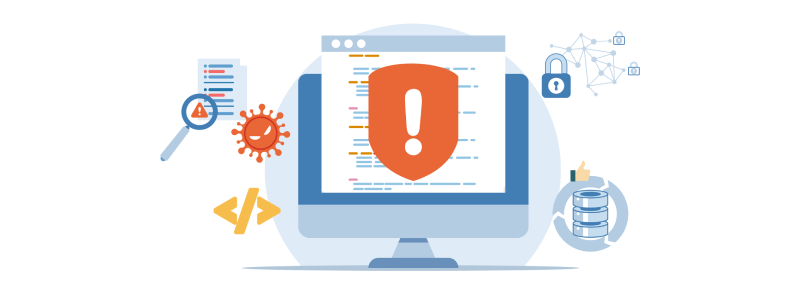by Michel Mouchon
Even though the IBM i is renowned for its reliability and robustness, it remains vulnerable to certain security flaws. With the evolution of cyber threats, some of these vulnerabilities can go unnoticed, endangering systems and sensitive data.
Here are the top 5 vulnerabilities, their impacts, and ways to prevent them.
1. SQL Injection: A Persistent Threat
SQL injection is among the most widespread vulnerabilities across all platforms, including the i. SQL injection allows cyber attackers to execute malicious SQL queries to manipulate or steal your data.
Consequences:
- Unauthorized access to databases
- Theft of sensitive information
How to avoid it?
- Use prepared statements or ORM (Object-Relational Mappers) to secure your database.
- Detect vulnerabilities with tools like ARCAD CodeChecker.
Tip: Train your development team on the best practices for writing SQL statements and handling user input to minimize risks.
2. Exposed API Vulnerabilities
With the increased use of APIs, security is often neglected. Poorly configured or insufficiently protected APIs become prime targets for attacks.
Consequences:
- Data breaches involving client information
- Service interruptions
How to avoid it?
- Implement robust authentication mechanisms like OAuth.
- Perform regular API scans using automated tools such as ARCAD CodeChecker.
Good to know: Clear and regularly updated API documentation is a good first step toward better security.
3. Insecure Code which Doesn’t Follow Standardized Practices
Source code, often exempt from rigorous reviews, can accumulate errors exploitable by attackers. The less standardized this code is, the more difficult it becomes to fix.
Consequences:
- Creation of backdoors
- Accumulation of technical debt
How to avoid it?
- Analyze code with tools like ARCAD CodeChecker to help standardize a set of best practices.
- Incorporate regular code reviews into your DevOps processes.
Advice: Automate quality checks to limit recurring errors.
4. Weak System Configurations
Default settings or insecure configurations, such as standard passwords or unused ports, increase the risk of intrusion.
Consequences:
- Unauthorized system access
- Exploitation of system vulnerabilities
How to avoid it?
- Regularly review and update configurations.
- Remove unused or insecure settings.
Tip: Adopt a configuration validation process before any production deployment.
5. Lack of Regular Security Testing
Security testing is often neglested, leaving vulnerabilities undetected for extended periods.
Consequences:
- Prolonged exposure to unknown threats
- Non-compliance with regulations
How to avoid it?
- Schedule regular penetration tests.
- Use ARCAD CodeChecker to automate security analyses throughout the development cycle.
Good to know: Regular testing is required to comply with standards like GDPR.
Conclusion
Securing applications is essential for protecting your systems and data. By identifying and addressing vulnerabilities like SQL injections or API flaws, and leveraging powerful tools like ARCAD CodeChecker, you can significantly reduce risks. Be proactive and ensure the security and quality of your applications today!

Michel Mouchon
CTO and VP of Strategy
Technical Director at ARCAD Software since 2000, Michel Mouchon plays a key role in the company’s technical strategy and coordination of R&D, engineering, and consulting teams. As a DevOps expert, he focuses on modernizing applications, methods, and tools. Holding dual degrees in electronics and software engineering, Michel has versatile IT skills. His communication talent and expertise are widely recognized within the international IBM i community.

REQUEST A DEMO
Let’s talk about your project!
Speak with an expert


























